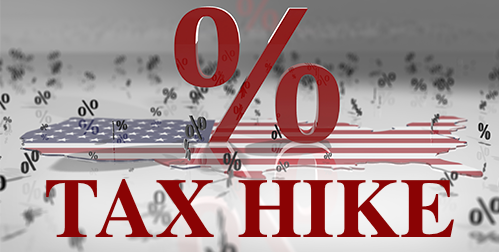On Monday, the President signed into law the $1 trillion infrastructure bill, making it the largest federal investment in infrastructure in more than a decade.
Americans simply disapprove of the government’s out-of-control spending and overall how they have been leading the nation, and the polls prove it.
According to a recent NBC News poll, 57% of Americans said they disapprove of President Biden’s handling of the economy.
In fact, Americans are so overwhelmed by fears of inflation that COVID no longer seems to be the leading cause of worry, according to other polls.
Additionally, the Congressional Budget Office estimates the bill would add $256 billion to the federal budget deficit over 10 years.
Keep in mind that right now, the government can’t seem to agree on raising the debt ceiling and risk defaulting on its loans.
The temporary extension by $480 billion expires on December 3 and if Congress doesn’t agree on increasing or suspending the debt ceiling, a partial shutdown could ensue.
It seems as though the federal government’s second favorite word after ‘transitory [inflation]’ is ‘trillion’.
The $1 trillion infrastructure bill plus the $1.75 trillion Build Back Better plan would equate to nearly $3 trillion in spending and may provide a fair enough reason to stoke some concern over the financial well-being of our country.
Republican National Committee Chairwoman Ronna McDaniel did not shy away from vocalizing her thoughts on this saying:
“Biden’s Build Back Broke agenda has led to skyrocketing prices, a supply chain crisis, a slowing economy, a worker shortage, and weak job growth. Trillions more in wasteful spending and higher taxes will only further hurt the middle class and recovering small businesses.”
Higher Taxes
In a new analysis published on Forbes, the Tax Policy Center estimates that the major tax changes in the latest version of President Biden’s Build Back Better plan would raise taxes to those in the top 1%, who will make about $885,000 or more.
They’d pay about $55,000 more than under current law.
Those in the top 0.1%, who make about $4 million and up, would pay an additional $585,000 on average, a 5.9% reduction in their after-tax income.
Taking into account all major tax provisions, roughly 20% to 30% of middle-income households would pay more in taxes in 2022.
In general, the combined effects of these changes would result in many households paying higher taxes in 2023 than in 2022.
With these contributing factors, it should be no guess as to why Americans are feeling less than positive about the direction in which we are headed.
How confident are you that everything is under control?
Call American Hartford Gold today at 800-462-0071 and let us know.






